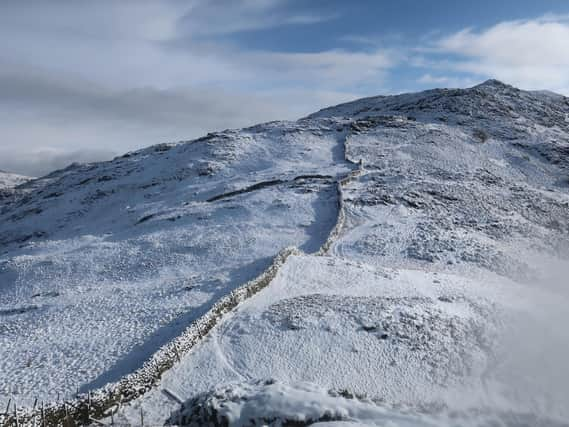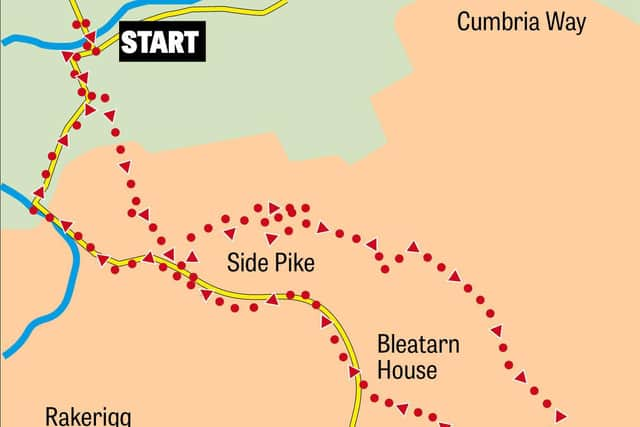Take in the spectacle and splendour from the home of British climbing


Coronavirus (COVID-19)
During the current situation please follow the official guidelines by the UK Government before thinking of venturing out on any walks. See www.gov.uk/government/topical-events/coronavirus-covid-19-uk-government-response.
If anywhere can call itself 'the home of British climbing' then the Old Dungeon Ghyll Hotel at the head of Langdale has good credentials.


Advertisement
Hide AdAdvertisement
Hide AdIn the latter years of the 19th century it was called Middlefell Inn and run by John Bennett who supplemented income from the inn and adjoining farm as a tourist guide. In 1900 the inn was bought by the historian G.M. Trevelyan who soon after gave the property to the National Trust. By 1949 the farming side of the business was wound up and the shippon was refurbished as a climbers bar. In the years that followed all the climbing clubs in the country held their club dinners at the Old Dungeon Ghyll (affectionately referred to as 'the ODG') with some well-known personalities among the guests – Sir John Hunt (who led the first ascent of Everest expedition in 1953), Joe Brown, Don Whillans and Chris Bonington to name but a few.
It is easy to see why the ODG attracted such a clientele – it is situated below some of the most challenging crags this country has to offer. The walk described below ventures nowhere near those crags but takes you to a viewpoint where they can be appreciated from a safe distance and on a route not without its own challenges.
Walk Facts
Start: Old Dungeon Ghyll Hotel LA22 9JY
Distance: 4.5miles
Time: 2 ½ -3 ½ hours
Grade: Strenuous
Maps: OS OL6 The English Lakes South western area.
Directions
From the car park follow the hotel’s drive back to the road (B5343). Turn right and then follow the lane as it bends sharply left. In 150yds turn left onto a footpath in the direction of Blea Tarn (1 mile) that enters the rear of Great Langdale National Trust Campsite. Almost immediately take a footpath on the right that begins to climb away from the valley bottom through a patch of woodland. Keep on this path as it climbs more steeply onto the open fell and reunites you with the road as it levels off close to a cattle grid.
The steep climb is but a prelude to the one you are about to follow to the summit of Side Pike. The signpost indicates that it is ¼ mile away which for most walkers is not very far. What is not indicated that most of this is near vertical ascent! It is worth pointing out that Side Pike can be avoided all together by continuing along the road for another ¼ mile then taking a footpath on the left which joins a wall and follows it to the ridge but this is the pedestrian option and will deny the reader of spectacle and splendour. So the way is left onto a path that takes you up the spine so to speak and with an immediate payback of sublime views down Mickleden the great valley shaped by glaciers at the end of the last ice age. To the left Bowfell and Esk Pike, both a little below 3000ft, give a sense of the scale of the mountain landscape while the Langdale Pikes to the right give it drama. All this will be behind you as you progress to the top so keep turning around (carefully!). The summit allows you rest and a chance to take it all in.
Advertisement
Hide AdAdvertisement
Hide AdIt may strike the reader that the next bit of information comes rather late in this description. Having enticed you up to the top of a sublime viewpoint I have to confess there is no way off it except to retrace your steps and descend 200ft to a path that safely contours the south flank to bring you to the ridge wall on Side Pike’s east side. Be aware that one section of the path is quite exposed and becomes an awkward scramble. Close to it is a squeeze known as 'Fat Man’s Agony'. I was somewhat apprehensive of going through this feature having not long returned from a cruise but at a little over 13 stone managed it – just! After it a kissing gate will put you on the ridge next to a wall.
For the route to Brown How, Lingmoor’s summit, the wall becomes your reference point. At first it is on your left but after 300 metres cross a stile and then continue with the wall on your right. The route takes you over or alongside a succession of 'bumps' to the top. Lingmoor Tarn down on your left signals that you are closing in on the objective as will the end of the wall and a wire fence. While Brown How lacks the dramatic punch of Side Pike nonetheless it provides you with a wide panorama incorporating much of the Lake District and beyond.
Descent is quite straightforward. A short distance from the summit is a stile on the right. Through this follow a path of sorts with a fence to the right. In 250yds this intercepts a path coming down from old quarry workings. Turn right and after the next stile at the head of a tree filled gully bear left to join a path that will lead you back to the road. Turn right for the ODG.
- Walk devised by Jill Greenhalgh organiser of the Wainwrights Thursdays Walking Group.